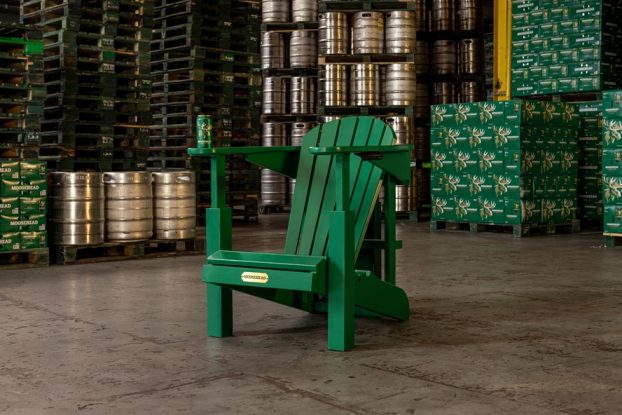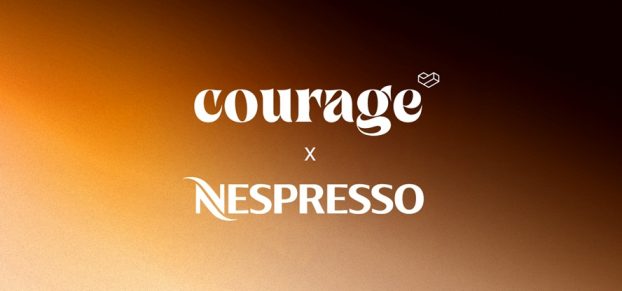What does a Maud Lewis tea cozy have in common with a Monet-inspired deck of cards?
Both, obviously, are unusual examples of art in everyday life. More to the point, both represent recent attempts by Canadian art museums – the Art Gallery of Nova Scotia in Halifax, and the Musée des Beaux-Arts in Montreal, respectively – to make themselves more appealing to the general public.
With competition for entertainment dollars and leisure time continually increasing, galleries today face a considerable marketing challenge – namely, luring audiences away from the myriad delights of the local amusement park or movie megaplex, and encouraging them to sample their more refined pleasures.
To do that, these bastions of high culture must position themselves as more populist attractions. And it’s fair to say they’ve still got a long way to go on that front.
‘We need to get the message out there that we’re not elitist,’ says Bernard Riordon, director and CEO of the Art Gallery of Nova Scotia.
For AGNS, mounting an exhibition of works by Maud Lewis was one way to cultivate a more accessible image. Lewis, who died in 1970, has long been a popular figure in Nova Scotia, and her work brings in people who would never normally go to an art gallery. The Maud Lewis exhibition, sponsored by Scotiabank, was unveiled in 1997, and will be touring the country through the fall of this year.
The licensing of various Maud Lewis-inspired products (including tea cozies, mugs and mouse pads) has helped spread the word even further – an important consideration, Riordon points out, since the gallery does not have an enormous advertising budget.
Such merchandising is, of course, one of the major tools that galleries have at their disposal in the effort to heighten their mass appeal. And it’s a key revenue-generator for many institutions.
The commercialization of fine art does sometimes lead to criticism. But Jane Rowland, communications manager for The Art Gallery of Ontario in Toronto, says she sees nothing wrong with it – as long as it is done in good taste.
‘Somebody is always going to be unhappy,’ she says. ‘[But] the majority of people are quite pleased. We see it in the cash register.’
Traditionally, galleries and museums have counted heavily upon word of mouth. But Danielle Sauvage, director of communications for Montreal’s Musée des Beaux-Arts, says institutions must go further if they hope to draw visitors in greater numbers.
The Musée, for example, has made extensive use of outdoor, transit, television and cinema advertising to spotlight various exhibitions. It has also been one of several Montreal cultural attractions featured on the lids of 50-gram containers of Liberty Yogurt.
Lining up corporate sponsors can be critical to building profile for important gallery shows. American Express, for example, was principal sponsor for the Musée’s recent ‘Monet at Giverny’ exhibit, which ran from January to May. And a number of major players, notably Abitibi-Consolidated, are behind ‘From Renoir to Picasso: Masterpieces from the Musée de L’Orangerie,’ which comes to the Musée early next year.
Securing sponsorship, however, isn’t always easy. As Sauvage points out, the Musée was unable to find a sponsor for ‘Cosmos,’ a current exhibit devoted to the theme of infinity in art. ‘It can be frustrating,’ she says.
Exhibit sponsorships are generally beneficial for both parties, says Jane Rowland of the Art Gallery of Ontario – In part because they open the door to cross-promotions and other forms of marketing cross-fertilization.
Both Bell Canada and Chrysler Canada, for example, sponsored the AGO’s recent ‘Angels from the Vatican’ exhibit – and both leveraged their involvement through other vehicles.
Bell, for its part, produced a limited edition calling card featuring imagery from the exhibit, along with a direct marketing campaign promoting both the show and other Ontario cultural attractions. Chrysler, meanwhile, developed print advertising that played on the exhibition’s theme.
As exhibit sponsors often do, both companies also held special events at the AGO. This sort of gathering benefits the gallery too, Rowland says, because it helps introduce even more people to the institution and its collections.
The AGO looks for ways to appeal not only to regular gallery visitors, but also to those who may seldom have passed through its doors. In the case of ‘Angels from the Vatican,’ for example, it placed ads in Italian and religious publications, with a view to luring new visitors.
The gallery also works closely with both the provincial and local tourism agencies, to ensure that it is promoted to anyone seeking information on entertainment attractions in southern Ontario.
‘In the last five years, museums and galleries have finally started to understand themselves as being tourist attractions,’ says Ursula Thiboutot, manager of marketing and communications with The National Gallery of Canada in Ottawa. As such, she argues, it is critical that they work closely with the tourism industry and other entertainment entities.
The National Gallery first adopted this strategy two years ago, in its efforts to promote a major Renoir exhibition. The gallery worked with other local cultural attractions and entertainment properties to market the Ottawa-Hull region as a whole, developing packages that included accommodations, restaurant meals and tickets to the exhibit.
And the co-operation paid off. Before the exhibit, the museum had approximately 2,400 members. By the time the show finished its run, that number had risen to 14,000. An economic impact study revealed that the exhibit ultimately brought $66 million to the region.
Where the National Gallery used to preach mainly to the converted, it now incorporates more family-oriented programming, as well as ‘touchy-feely’ interactive exhibits.
Thiboutot says galleries must remain flexible and attuned to the needs of the audience. When, for example, the National Gallery mounted its Picasso exhibit last year, it adjusted its regular hours to make it easier to accommodate tours, particularly by school groups.
The National Gallery has also launched a magazine, Vernissage (‘Openings’), which profiles both its exhibits and its international work. And it has run a television and print campaign (created by Ottawa-based Acme Advertising) highlighting the fact that, as this country’s national fine arts museum, it offers free admission.
Its Web site (http://national. gallery.ca), sponsored by American Express Foundation, is geared toward making art accessible, by allowing surfers to view various pieces from the museum’s permanent collection.
Also in this report:
– Pan-Am Games attract sponsors despite string of misfortunes p.19
– Edgefest tour rocks Chart’s world p.22
– Relevance key to online sponsorships p.22
– World’s tallest building comes up short: Could do a lot more to leverage sponsorship opportunities p.23























